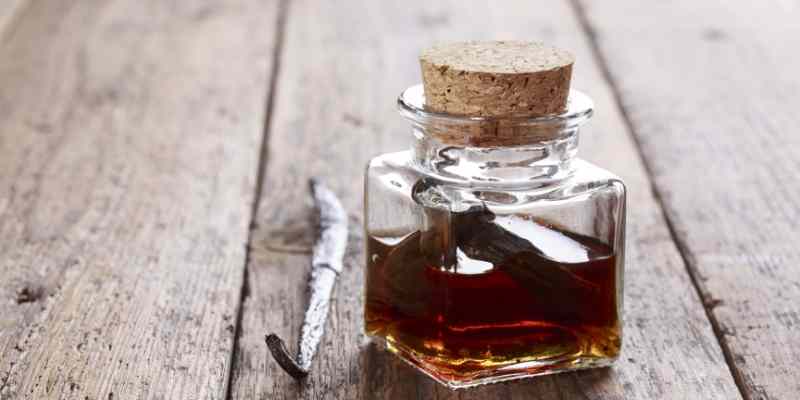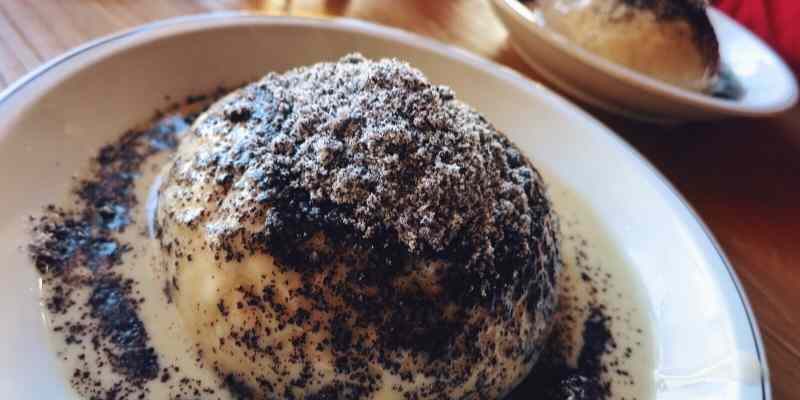Human loves vanilla! Not only is it a good flavor, but it also believed to offer several benefits. Including antioxidant properties, reducing inflammation, and even reducing anxiety, among other benefits. But what about pets? Can we give vanilla to dogs and expect the same benefits?
Are you interested in a particular topic about vanilla and dogs? Then use the table of contents below to jump to the most relevant section. And you can always go back by clicking on the black arrow in the right bottom corner of the page. Also, please note that some of the links in this article may be affiliate links. For more details, check the Disclosure section at the bottom of the page.
Can my dog eat vanilla?
The answer to this question is yes, your dog can eat vanilla. But it’s not the most nutritious or healthy addition to pup’s diet. So it is advisable to share vanilla spices with a dog as seldom as possible and in moderation.

Can vanilla be bad for your dog?
There are forms and concentration of vanilla which are toxic when used in treats that are fed to dogs. Just like any food, excessive vanilla consumption leads to many ill effects in canines, including vomiting, respiratory failure, among others. The vet should be your first stop if your dog displays any unhealthy signs or symptoms after consuming food with vanilla content.

Can dogs eat vanilla extract?

This specific form of vanilla can be harmful to dogs. The product mostly contains alcohol as one of the ingredients. And dogs can’t break down alcohol in their system and can be at risk of alcohol poisoning.

Can my dog eat vanilla ice cream?
While for most humans, vanilla is one of the most favorite ice cream flavors, that’s not a good reason to share it with your dog.
While vanilla ice cream may be the safest option overall, it is risky to give your dog human ice cream.

According to the USDA (United States Department of Agriculture) Food Database, the 100g serving of vanilla ice cream contains 356 calories, .4.11.g of protein, .30.14.g of carbs, (26.03g come from sugar) and 24.66.g of fat, including .17.81.g of saturated fats and 27mg of cholesterol. Rich in bad fats and sugars – that’s not the best composition for your dog.
And even If you are considering low sugar ice cream, you must keep in mind that they contain synthetic sweeteners, which are worse for dogs than natural sugar. However, on rare occasions, you can treat your pup with vanilla ice cream for dogs.
is the mix for the dessert that you have to make yourself. But the ingredients and nutritional values are absolutely dog-safe. It only has 15 calories per 1 oz serving. And it’s made of lactose-free whole milk. And it’s highly enjoyable by all sorts of pups as reported by many dog parents.

Can dogs eat vanilla cake?
Dogs shouldn’t eat cakes. Vanilla cake (like any other) is loaded with sugar and empty calories, which dogs simply do not need in their diet.
According to the USDA (United States Department of Agriculture) Food Database, the 100g serving of vanilla cake contains 446 calories, 2.41g of protein, 50.6g of carbs (37.35g are coming from sugars), and 26.51g of fat.

Sugar provides zero nutritional benefits. Over time, sugar contributes to weight gain and diabetes. You may want to share a healthier option with your dog instead. For instance, baked dog treats with vanilla flavor are a way safer alternative to any human sweets you can share with your pup.
Those are only 44 calories per treat, made with all-natural dog-friendly ingredients. And dogs seem to go BANANAS about it. The only risk is that they might crash during the delivery. But it’s always there when you are shopping for cookies, crackers and all that.

Can dogs have vanilla? Summary
There are different forms in which vanilla can be given to dogs intentionally or otherwise. It is up to you to determine the safest way to treat your dog with any food or snack containing vanilla.
Vanilla can make a good flavor for a dog if you pick wisely. Or it can expose the pup to risks of poisoning if ingested in excess or in a toxic form. I recommend sticking with dog-friendly vanilla products. Whether it’s ice cream or a treat.
Credits: thanks for the photo to Canva.


